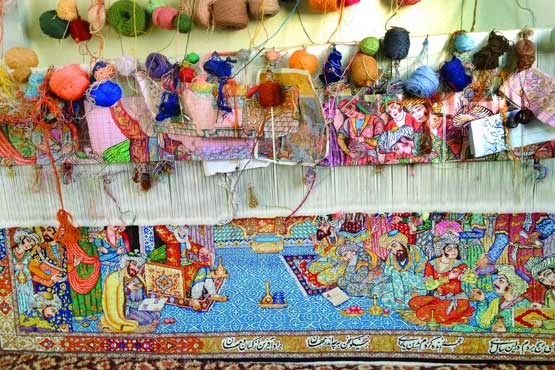The Timeless Elegance of Aubusson Rugs
Aubusson rugs, with their origins in the 17th century, are renowned for their intricate designs and luxurious craftsmanship. These exquisite floor coverings hail from the villages of Aubusson and Felletin in France, where they were originally crafted for royal residences and the homes of the elite. Today, Aubusson rugs continue to be cherished for their beauty and historical significance, making them a coveted addition to any interior decor.
Historical Origins and Royal Patronage
The tradition of Aubusson rug weaving dates back to the 1600s, a period when the craft flourished under royal patronage. The French monarchy and nobility commissioned these rugs to adorn their palaces and chateaux, appreciating the detailed artistry and fine materials used in their creation. The intricate patterns and pastoral scenes often depicted in these rugs reflect the tastes and sensibilities of the French aristocracy, blending elements of classical and Baroque art.
Characteristics of Aubusson Rugs
Aubusson rugs are easily recognizable by several key features:
- Material: Traditionally woven from high-quality wool, these rugs are both durable and luxurious. The use of wool ensures a soft texture and a resilient surface, suitable for high-traffic areas.
- Colour Palette: Aubusson rugs are known for their elegant pastel colour schemes. Common hues include soft pinks, peach, light blues, and various shades of beige. These colours lend a serene and sophisticated ambiance to any room.
- Designs: The designs of Aubusson rugs are characterized by intricate floral patterns, delicate scrolls, and ornate medallions. These motifs often include garlands, bouquets, and lush foliage, arranged in symmetrical compositions that reflect the classical influences of the era.
- Weaving Technique: The flat-weave technique used in Aubusson rugs creates a smooth, tapestry-like surface. This method involves weaving the wool on a vertical loom, allowing for detailed and precise patterns.
Modern Production and Global Influence
In the past century, the production of Aubusson rugs has expanded beyond France, with many high-quality reproductions now being made in China. These contemporary versions maintain the traditional techniques and aesthetic principles of the original French weavers, ensuring that the legacy of Aubusson craftsmanship continues.
Chinese-made Aubusson rugs are often indistinguishable from their French counterparts, featuring the same woolen materials and pastel colour schemes. The global production of these rugs has made them more accessible, allowing a wider audience to appreciate their timeless elegance.
Interior Design and Decor
Aubusson rugs are prized by interior designers and homeowners alike for their ability to elevate any space with a touch of classical sophistication. Their delicate patterns and soft colors make them versatile pieces that can complement both traditional and contemporary decor styles.
- Living Rooms: Placing an Aubusson rug in a living room adds a layer of luxury and warmth. The rug’s intricate designs can serve as a focal point, harmonizing with other decorative elements in the room.
- Bedrooms: In a bedroom, an Aubusson rug creates a serene and inviting atmosphere. The soft pastels and elegant patterns contribute to a peaceful and restful environment.
- Dining Rooms: Under a dining table, an Aubusson rug can anchor the space and enhance the overall aesthetic. The durable wool construction ensures that it can withstand the wear and tear of daily use.
Aubusson rugs are more than just floor coverings; they are works of art that carry centuries of history and craftsmanship. From their origins in 17th-century France to their modern reproductions, these rugs continue to enchant with their intricate designs and luxurious materials. Whether adorning a royal palace or a contemporary home, Aubusson rugs bring a timeless elegance that transcends trends and generations. Their enduring appeal lies in their ability to blend beauty and functionality, making them a cherished addition to any interior space.

